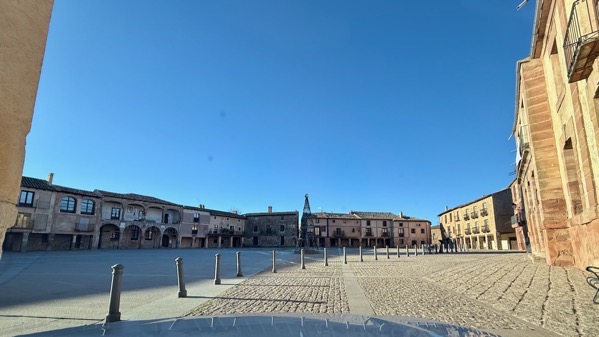
Towns, cities, even small communities, have a plaza (say: plah-thuh here in Spain). In all but the smallest communities, it seems to me, the largest is the Plaza Major (say: mah-yore (kinda)), that is: the biggest plaza. In Medinaceli, it is substantial.
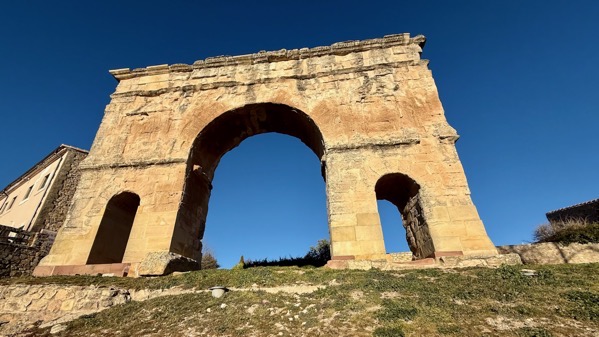
Medinaceli is more famous for this Roman triple-arch—the only triple surviving in Spain.
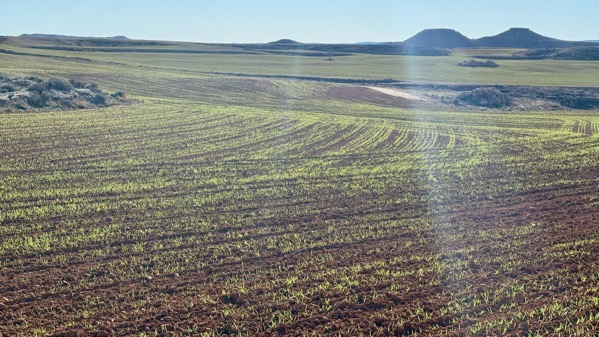
As near as I can tell, all the row-crops we saw today were this, which I think is winter wheat, that is, planted in the fall, and probably hard/bread wheat. This is what mono-cropping can look like.
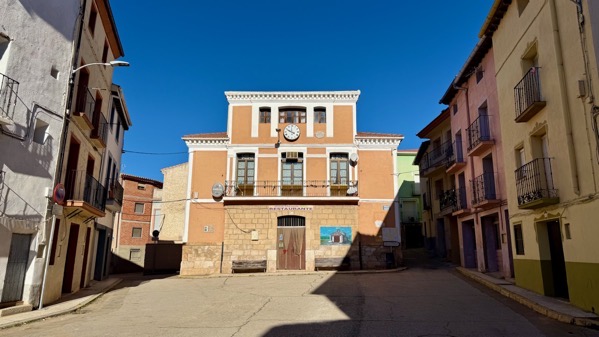
Here’s a smaller community’s main plaza, a place called Deza.
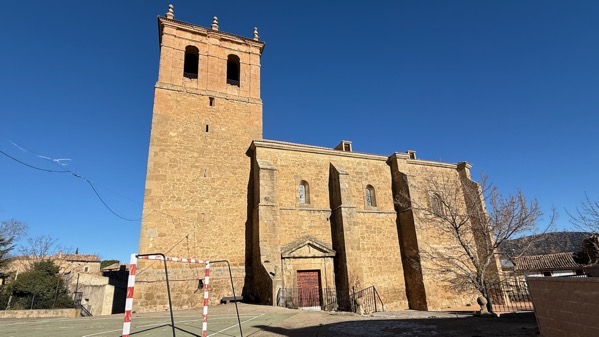
This church presides over a playground for small children with two of those ride-a-critter-on-a-spring toys, plus a combo soccer and basketball court for the older kids. The plaza is behind the church from this location, and is about the same size as the one in Deza. This is Mazaterón.
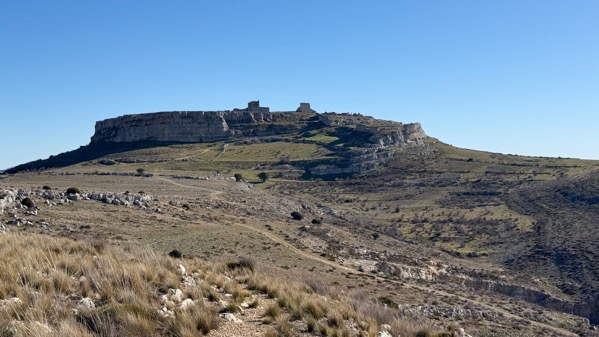
Meet Peñalcázar; peña means cliff. We tried to get to this Medieval ghost town atop an amazing landform. The wind was strong and gusty, too much to fight our way along. If we’d had a 4×4 we probably could have made it up the two-track you can barely see, at least to the outer wall.
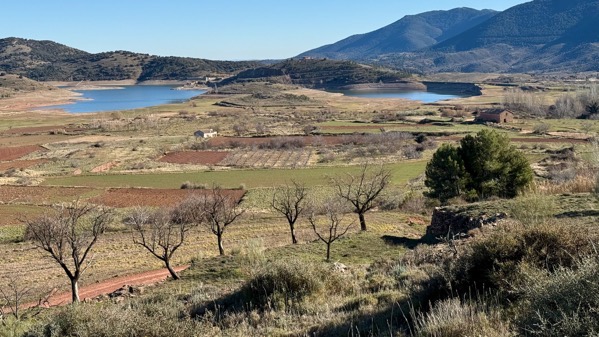
The landform won here, too. We tried to climb to the Celt-Iberian settlement that was above us, and controlled this lovely valley, now partly reservoir. We made it about twice this high before we quit. I estimate we were about a third of the way to the site, but it could have been less. Great views, however.
The site is called Aratis, and it is most famous for the several stunning bronze helmets found I believe by metal detectorists. They date to the later Iron Age, probably the 1st C BC. By this time, the Romans were beginning to swarm southern Iberia and Iberia’s Mediterranean coast. Aratis was inland, and at that time safe from incursions.
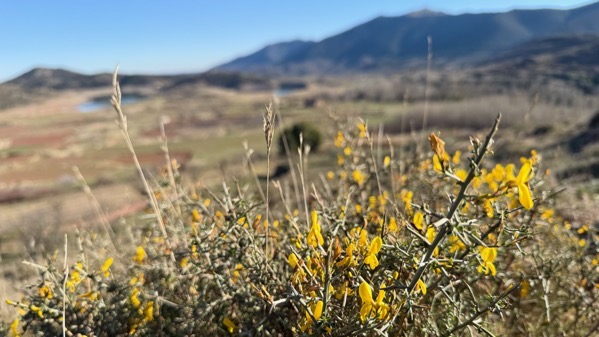
At our feet were these spiny plants, Genista scorpius, I think. We also trod on what smelled exactly like sage.
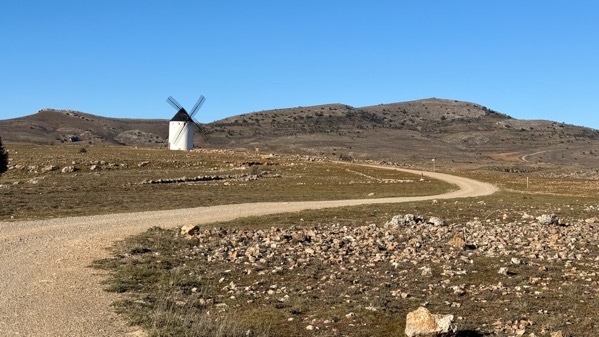
We popped up over the lip of a hill, having climbed out of a valley with a large mill complex, now abandoned, that looked like it was in use into the latter half of the twentieth century…and look what we spotted. The configuration and paint job is traditional in Spain (at least now). Outside of Malanquilla.
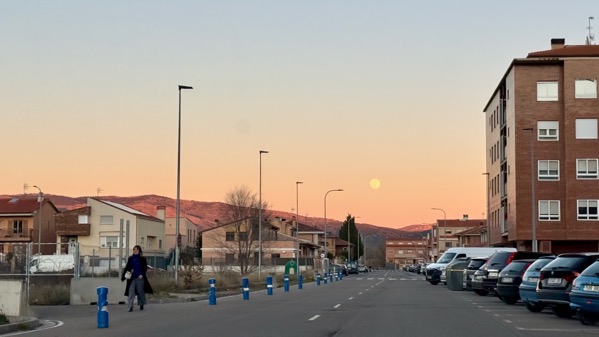
What a moon as we left our hotel to do some errands. Almost 6pm in Calayatud. The name is a corruption of the Arabic Qal‘at ’Ayyūb, meaning fortress of Ayyūb. Ayyūb is the equivalent of Job, which at least at that time was a common Arabic name. This Ayyūb was Ayyūb ibn Habib al-Lakhmi, the walí, or, roughly, governor, here of al-Andalus, an official reporting directly to the sultan, or, in this case, the emir of Córdoba. There’s a fine hierarchical bureaucracy.
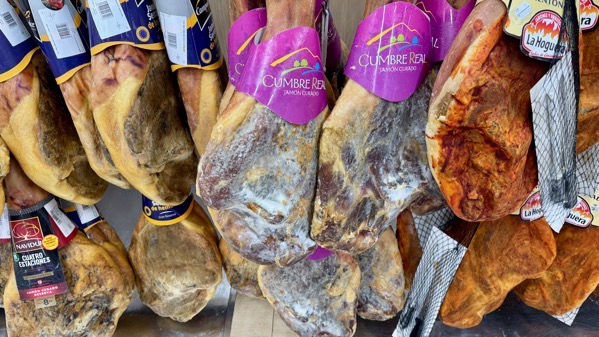
On the top of the list was to scare up some eats, as almost all restaurants in the city are closed on Monday. We went to a large modern supermarket (skipping Aldi). I spotted this offering, probably about 10 different brands/types on offer. [I edited the hooves from the photo; you’re welcome.] I did not look at the prices, but I suspect they were substantial.